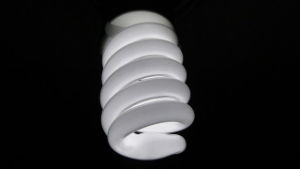You have no items in your shopping basket.
LED Lighting - The Common Myths

Most forms of new technology or trends have their fair share of myths and rumours surrounding them, and LED lighting is no different. There are a couple of myths which surround the concept of LED lighting, and some of them can be very easy to believe if you don’t know the truth behind them. To try and help with this, we’ve taken a look at a few different myths about LED lighting to try and ‘debunk’ them, so to speak.
Myth 1: LED bulbs are more expensive
One of the first things that people assume about LED lighting is that it is more expensive than the traditional filament bulbs which were in use. However, while it can be argued that they are more expensive as one type of lighting system compared against another, it is much more cost effective on a long term basis. The LED lighting will go on for much longer than the standard bulbs, which become more expensive if you have to keep purchasing replacements for them.
Myth 2: LED bulbs have a short lifespan
Another common misconception that people have about LED lighting is that the bulbs which are used have a shorter lifespan than the previous bulbs. This is not true, however. On average, the LED bulb has around 50,000 hours of use available, which is vastly superior to the old bulbs that only had around 1,500 hours, making them the less viable option in terms of lifespan.
Myth 3: LED bulbs are not as bright as other bulbs
This myth is simply just not true at all. The only instances in which LED bulbs have been measured as being inferior in terms of the levels of light produced is when an incorrect measuring system is being used. The truth of the matter is that the LED bulbs are just as bright when you use the traditional measuring system, which is called lumens. They’re also much more energy efficient as well when compared to their non-LED counterparts.
Myth 4: LED lights produce no heat
This is something which needs to be cleared up. It isn’t that LED lights produce no heat energy, and the truth is that they do not produce any infrared or ultraviolet light waves. It is these types of light waves which make regular bulbs very hot, to the point of burning skin they come into contact with. LED lights produce neither of those waves, which means that while they may still heat, it will never be to a dangerous level.
Overall, these are just a few of the myths which surround LED lighting. Most of them come from a lack of knowledge about the technical details of the light bulbs themselves and are thus easily disproven in the face of clear evidence. LED light bulbs are an efficient and inexpensive way of generating light for both commercial and industrial areas and are just as capable of producing light as other types of bulbs are, with the only difference being that the LED light bulbs are just the more cost effective lighting solution, regardless of the situation.
